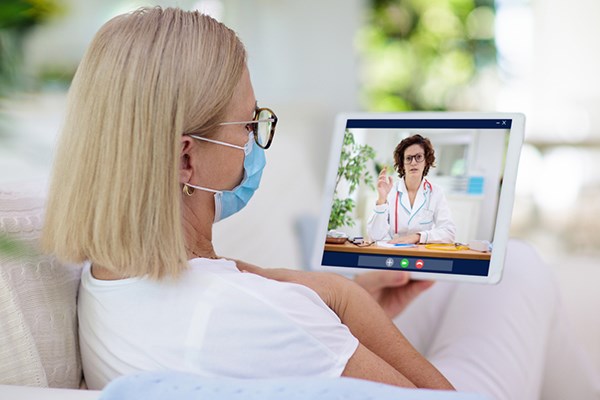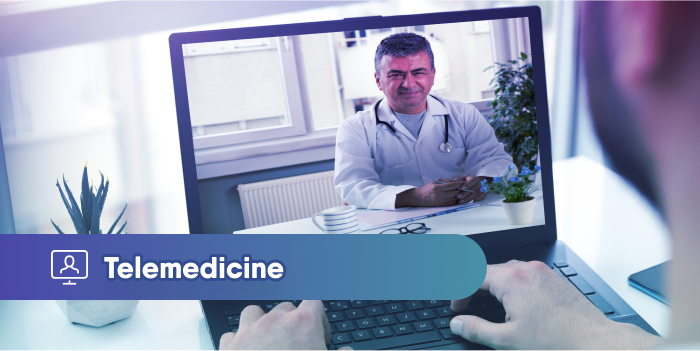Welcoming Telemedicine: Changing Medical Care Distribution for a Modern Globe
As we browse a period identified by quick digitalization and progressing patient needs, the integration of telemedicine into typical medical care methods presents an engaging suggestion. In checking out the ramifications and ins and outs of embracing telemedicine, a nuanced understanding of its multifaceted effect on healthcare delivery in the modern-day world ends up being crucial.
The Advancement of Telemedicine
Telemedicine has gone through substantial advancement over the past few decades, changing the landscape of medical care shipment. Initially conceived to bridge the space between doctor and clients in remote areas, telemedicine has now increased its reach to use a large range of clinical services via technological developments.
In the onset, telemedicine mainly involved assessments using telephone or video clip conferencing. With the spreading of electronic devices and systems, healthcare experts can now remotely keep track of vital signs, conduct online exams, and also execute specific medical procedures. This change in the direction of even more detailed online treatment has transformed the means health care is supplied, making it more convenient and obtainable for individuals.
Furthermore, the assimilation of digital health documents (EHRs) and telemedicine has boosted sychronisation amongst medical care groups, bring about extra reliable and collaborative person treatment. Telemedicine reviews. With the continuous advancements in expert system and remote tracking gadgets, telemedicine is positioned to proceed advancing, providing ingenious options to boost healthcare results internationally

Benefits of Telemedicine Adoption
As the usage of telemedicine has actually increased to encompass a broader spectrum of medical services and technological abilities, the advantages of its adoption in modern-day healthcare distribution have become increasingly apparent. One of the key benefits of telemedicine is raised accessibility to medical care solutions, particularly for people in underserved or remote areas. Individuals can now consult with doctor without the need for prolonged travel, reducing both time and price barriers. Additionally, telemedicine enhances benefit for individuals by allowing them to set up visits sometimes that match their timetables, advertising better adherence to treatment plans.
Additionally, telemedicine can lead to better health end results through improved care sychronisation. Telemedicine can assist ease pressure on conventional medical care systems by minimizing overcrowding in healthcare facilities and centers, eventually boosting general performance and client complete satisfaction.
Overcoming Telemedicine Difficulties
Dealing with the obstacles inherent in incorporating telemedicine right into existing medical care systems presents an essential yet surmountable challenge for medical care service providers worldwide. Persuading conventional medical care carriers to adopt telemedicine requires thorough training programs and continual support to make sure smooth assimilation.
In addition, governing barriers and reimbursement constraints present significant difficulties to the prevalent implementation of telemedicine. Numerous state and nation policies relating to telemedicine practices develop a complex atmosphere for companies to navigate. Reimbursement policies that do not appropriately make up for telemedicine solutions can prevent healthcare organizations from investing in this cutting-edge technique to care shipment.

Enhancing Patient-Provider Communication
Browsing the landscape of telemedicine difficulties illuminates the critical need for improving patient-provider communication in modern-day healthcare shipment systems - Telemedicine reviews. Effective communication lies at the heart of top quality health care stipulation, and in the realm of telemedicine, where physical signs may be restricted, compassionate and clear communication becomes a lot more extremely important
Enhancing patient-provider communication in telemedicine entails various approaches. First of all, developing rapport and trust with energetic listening and compassion can assist cultivate a strong patient-provider connection. Utilizing protected more messaging platforms or teleconferencing devices can facilitate hassle-free and normal interaction between suppliers and patients. Giving clear guidelines, establishing reasonable assumptions, and making sure open lines of communication for follow-up questions can improve the general individual experience in telemedicine.
Future Trends in Telemedicine
Preparing for the development of telemedicine, innovations in innovation and health care delivery systems are paving the method for cutting-edge methods to individual care. One of the future trends in telemedicine is the integration of artificial intelligence (AI) and equipment discovering algorithms to boost diagnostic capabilities.
Furthermore, the development of telemedicine solutions to underserved country and remote locations is a critical trend. By leveraging telemedicine, healthcare suppliers can reach clients in remote areas, enhancing accessibility to quality treatment. One more fad these details is the ongoing advancement of remote tracking gadgets and wearable modern technology, permitting for real-time tracking of individual health metrics from a distance. These improvements in telemedicine hold great guarantee for changing health care distribution and enhancing client end results in the future.
Conclusion
Finally, telemedicine has changed health care distribution by improving accessibility to care, boosting efficiency, and enhancing individual outcomes. In spite of obstacles, the benefits of telemedicine adoption are clear, leading the way for better patient-provider communication and future advancements in healthcare. As modern technology remains to develop, telemedicine will play an essential function in transforming healthcare distribution for a modern-day world.

Expecting the evolution of telemedicine, developments in innovation and medical care shipment systems are leading the way for ingenious strategies to client treatment. These innovations in telemedicine hold excellent guarantee for transforming medical care delivery and improving patient end results in the future.
In final thought, telemedicine has changed medical care distribution by boosting accessibility to care, boosting effectiveness, you could look here and boosting client end results.